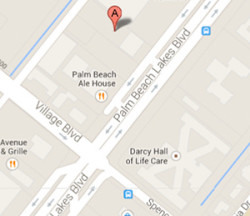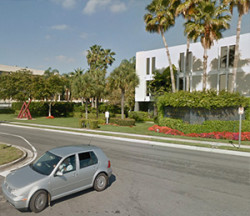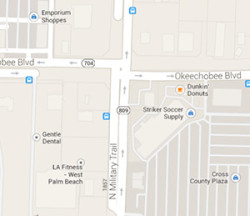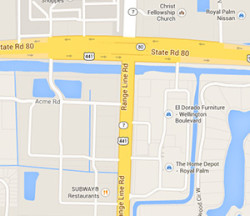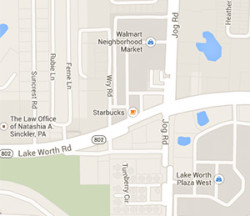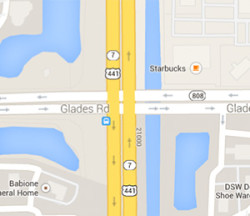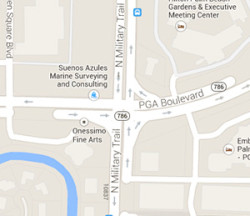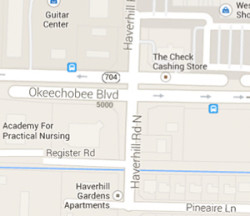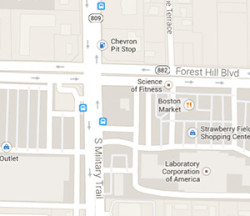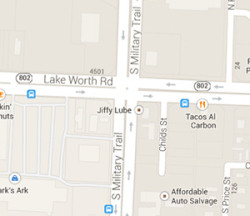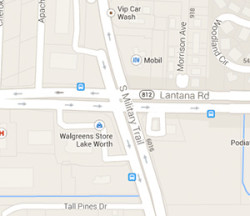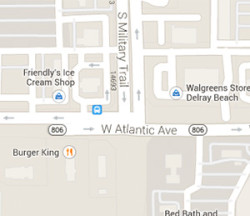How to Drive Safely at Dangerous Intersections
The What and Why of Intersection Crashes
An intersection is a road junction where two or more roadways meet, cross, or converge. In other words, functionally, an intersection is where traffic moving in different directions all comes together. If you live in an urban area, you navigate intersections dozens of times every day. And if you’re taking a road trip, you will encounter huge mazes of intersections that look like the most complicated Lego fantasies.
Intersections can be designed in a number of different configurations and sizes. In traffic design, intersections can contain as many as six streets converging. For example, a six-way intersection can involve the crossing of two perpendicular streets and yet another street that crosses them diagonally. Highway intersections can become extremely complex, with as many as eight or ten roadways converging.

- According to the National Highway Traffic Safety Administration, about 40% of all crashes nationwide – and 21% of all fatal crashes – occur at intersections.
- In Florida, nearly 29% of statewide traffic fatalities between 2006 and 2010 related to intersections. In that five-year period, 4,719 people were killed and another 50,408 were seriously injured in intersection-related crashes.
The NHTSA’s September 2010 Study of Crash Factors in Intersection Related Crashes identifies some common driver patterns that lead to intersection accidents:
- While crossing over at intersections with traffic signals or stop signs, crashes are commonly caused by a driver’s lack of attention or illegal maneuvers. Drivers turning left at intersections with traffic signals or stop signs are likely to become involved in accidents because their view is obstructed or they misjudge the speed of an oncoming vehicle. Crashes involving right turns at stop signs are often attributed to a driver’s false assumption about another vehicle’s actions.
- Analysis of intersection crash factors notes several age distinctions: Accidents involving drivers age 24 and younger at traffic signal intersections are likely to be caused by a driver’s internal or external distraction, a false assumption of another vehicle’s action, or speeding/aggressive driving. Drivers 25 to 54 at intersections controlled by traffic signals are commonly involved in crashes because of “critical non-performance error” (such as from fatigue or medical impairment), illegal maneuvers, inattention, or aggressive driving. Among drivers 55 years old and older, crashes at intersections where there are stop signs tend to be caused by inadequate surveillance or misjudging the speed of another vehicle.
- Female drivers involved in crashes at intersections controlled by traffic signals are likely to have misjudged other drivers’ actions or to have been distracted by an internal circumstance. Male drivers, on the other hand, are more likely to have been involved in traffic signal intersection crashes because of critical non-performance errors, illegal maneuvers, or aggressive driving/speeding.
In Florida, a statewide Intersection Safety Implementation Plan first developed in 2006 has been credited with a five-year decline in intersection-related fatalities and serious injuries. The Florida plan included new intersection signal designs and identification of high-crash locations where countermeasures could be developed specific to those locations. In 2009, the Florida Department of Transportation (FDOT) adapted a systemic approach focusing on stop sign control on side streets of high-speed divided highways. This approach also encouraged review and use of new techniques for signal timing for pedestrians.
Stats and Facts About Dangerous Intersections
Here is some factual information that will make you think about intersection safety . . . and think twice before you run a red light!
- An estimated 40% of motor vehicle crashes occur at an intersection or are intersection related.
- 21% of all fatal crashes occur at an intersection.
- 49% of crashes in urban areas occur at an intersection.
- More than 32,000 people are killed in motor vehicle wrecks each year.
- An additional 2.2 million Americans are injured annually in vehicle accidents.
- Two out of three people say that a few times each week they witness someone running a red light. Many report that they see this happen once a day.
- One of three Americans knows someone killed or injured as a result of an accident caused by red light running.
- Of 1.9 million intersection crashes, 219,000 were the result of red light running.
- In 2009, 7,043 people were killed in vehicle crashes related to intersections. In 2008, 7,809 people were killed. In both years, this represents 21% of total fatalities nationwide.
- 92% of motor vehicle crashes occurring in an intersection happen in dry weather.
- 61% of intersection crashes occur on undivided roadways; 37% happen on divided roads.
- Age groups with the largest percentage of intersection accidents are 21 to 34, 35 to 39, and 65+ years old.
- 78% of Americans believe street intersections are dangerous and should be made safer.
- The cost to society for vehicle crashes is more than $96 billion per year.
Advice for Safer Intersections and Safer Driving
Here are some quick tips for navigating intersections, avoiding accidents, and arriving safely at your destination.
- Aggressive driving. Speeding up to “make” a red light is a dangerous practice. A yellow light means to prepare to stop; by the time a light is red, you should be stopped or slowing to a stop.
- Distracted driving. Talking on the phone and texting are obvious distractions and are illegal in almost all states. But there are many other examples of distracted driving that may contribute to an accident, such as shaving, applying makeup, or looking at a map.
Searching for an address also can contribute to driver inattention and distraction. So before leaving for your destination, set your GPS or find directions on a site you like. If you use Google maps, go to the street level view so you have an idea of what your destination building looks like.
Our office at 2139 Palm Beach Lakes Boulevard in West Palm Beach, Florida, looks like this on Google Maps:
But the street view (below) gives you something to look for from the roadway.
- Watch your speed. Speeding is one of the substantial contributing factors to accidents, especially those that occur in intersections or while entering or exiting intersections.
- Maintain your vehicle. Malfunctioning warning lights (turn signals, brakes, headlights, etc.) make it difficult for other motorists to predict your actions.
- Raise your caution level. Demonstrate extra caution during congested traffic times such as rush hours, in construction zones, and while passing accident scenes.
- Practice patience. Impatience increases emotions and deceases attention.
- Do not drive impaired. Driving after drinking or taking drugs (illicit or prescription) is an obvious “do not do.” Inadequate sleep also can impair drivers, sometimes as significantly as drinking and driving.
- Do not eat and drive. Tempting as it may be to whip through a drive-through and pick up a burger and shake, eating while driving proves dangerous when you take your hands off the wheel and your eyes off the road.
- Never run a red light. This bears repeating: Nearly one in eight intersection crashes is the result of someone running a red light.
- Always wear your seatbelt. Insist that everyone else in your car buckles up too. Children need to be in the back seat in child safety seats appropriate to their age and size.
- Stow away electronic devices. You won’t be tempted to lunge for your cellphone or tablet if these are safely stored out of reach.
- Evaluate your own driving skills. Do a self-assessment – and ask others too – about your driving skills and habits, then think about how you could improve.
- Take a defensive driver evaluation course. Many communities offer these classes, and the American Automobile Association (AAA) offers online schools at www.idrivesafely.com. You may even be able to get a break on your auto insurance.
- Driving is not a competition. When you are driving, your goal is getting from point A to point B safely and without an accident.
- Be courteous to other drivers. It’s the Golden Rule!
Approaching Dangerous Intersections Safely
An intersection has the potential for danger to YOU as well as to others. When you think about it, the very concept of multiple vehicles proceeding in different directions but converging at a single point might be what you would arrange to happen if you purposely wanted to cause an accident!
So what can you do to increase safety at intersections?
Driver etiquette is the first measure toward improving intersection safety. But who has the right- of-way at an intersection? The answer is, it depends!
- Emergency vehicles, of course, always have the first right-of-way. Remain stopped and still until the emergency vehicle has completely cleared the area of the intersection. Before you move, check to be sure other emergency vehicles are not following the first one.
- Pedestrians always have the right-of-way. Even if a pedestrian is crossing illegally (jaywalking), you still must always yield the right-of-way.
- Unregulated flow of traffic always has the right-of-way. At an intersection regulated only by a stop sign at one of the cross streets, the unregulated flow of traffic has the right-of-way.
- The vehicle reaching the intersection first and stopping first always has the right-of-way at intersections regulated by stop signs at all cross streets. If vehicles arrive at the intersection at around the same instant, you should yield to the vehicle on your right. Vehicles turning left should always yield to vehicles proceeding straight ahead.
Make sure you know exactly what to do as you approach various traffic signs and controls.
- Yield signs do not mean “stop” unless heavy traffic on the roadway compels stopping. Yield means to merge slowly and carefully with traffic moving in the same direction that you are proceeding and, when necessary, giving the right-of-way to vehicles approaching or already in the intersection.
- Traffic lights come in different colors and different types. The fully-controlled traffic light has a red, yellow, and green light in each direction, which controls the flow of traffic. A green light means proceed with responsible caution; yellow signals to prepare for a change at the intersection, most often followed by a red light – which, of course, means to stop.
Yellow lights are not an invitation to motorists to speed up through the intersection to “beat” the red light. Use good judgment to avoid violating the subsequent red light and, at the same time, to avoid having to stop in the middle of the intersection.
Occasionally you will encounter blinking lights: Blinking amber lights alert the driver to be cautious in approaching and proceeding through an intersection. Blinking red lights require that motorists stop at the intersection before proceeding through.
- Unmarked intersections that have no controlling lights or signs should be treated as full stops in all directions before proceeding.
Planning ahead can avoid the rush, reduce the stress of traffic, and help assure that you get where you’re going, on time.
- Rushing to make an appointment because of poor planning is a recipe for an accident. Running a red light because you are in that rush is asking for an accident! Plan ahead, anticipate traffic delays, and leave early for your destination.
- Listen to traffic reports before leaving on your trip. Consider alternate routes of travel in order to work around traffic snarls and accidents that may be clogging your planned route.
- Avoid distractions that interfere with your ability to drive safely. Driving requires significant cognitive resources. Your brain is using visual cues, audio cues, and high thought processing just to keep you moving safely down the road. Driving a vehicle does not mix well with distractions such as talking on a cell phone, emailing, shaving, eating, putting on makeup, reading a newspaper, or any of the many other activities that drivers often try to combine with the job of driving.
- Drive defensively, anticipating difficult situations and problems before they happen. Think about what other drivers might do as they approach an intersection, especially when you are altering your own path for approaching that intersection.
- Do not change lanes as you enter or exit an intersection. And always yield to other traffic when making a U-turn in an intersection or elsewhere on the roadway.
In other words, be careful out there!
Ten Most Dangerous Intersections in Palm Beach County
(From Crash Data 01/01/2012 – 12/31/2012)
- North Military Trail & Okeechobee Boulevard
- Southern Boulevard & State Road 7
- South Jog Road & Lake Worth Road
- Glades Road & South State Road 7
- PGA Boulevard & North Military Trail
- Okeechobee Boulevard & North Haverhill Road
- South Military Trail & Forest Hill Boulevard
- South Military Trail & Lake Worth Road
- Lantana Road & South Military Trail
- South Military Trail & Atlantic Avenue
Share This

